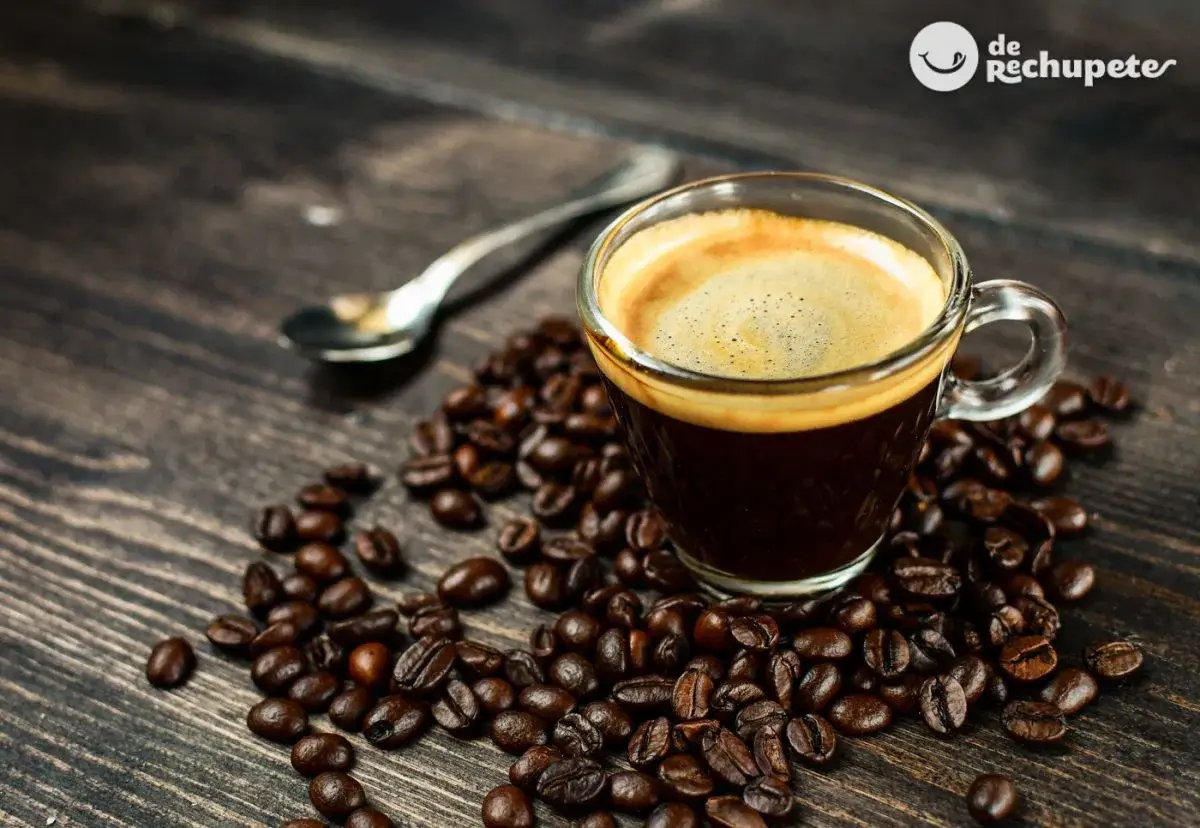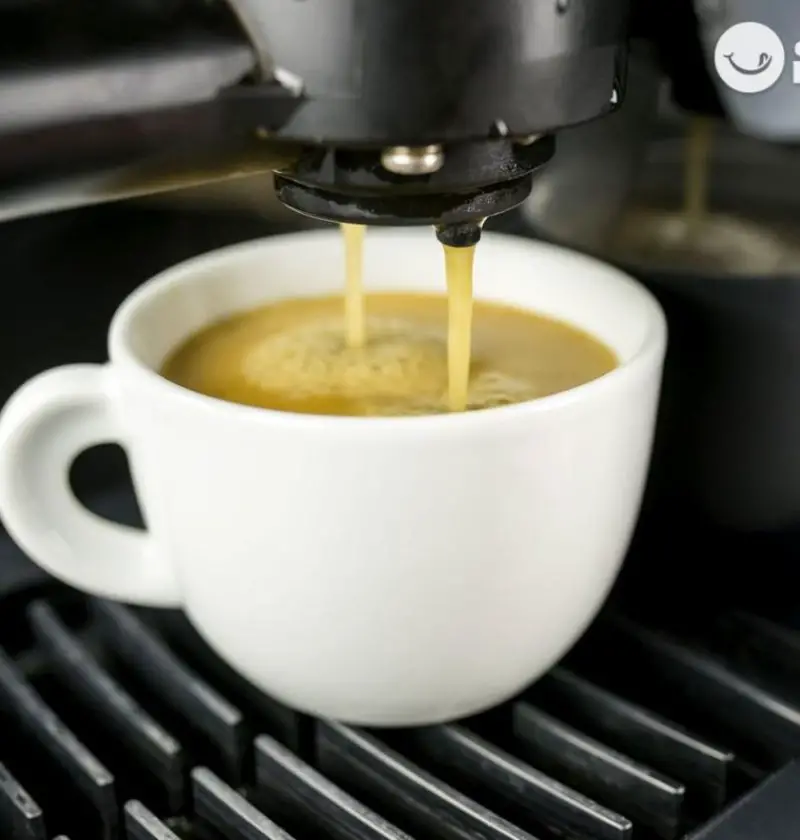
For 1
€ 0.3 /pers.
1 kcal/100g
Ingredients
- Amount of quality coffee (variety or mixture that you like) 7 – 7.5 grams of pressed ground coffee
- Machine water temperature 88 – 92º C
- Water pressure 9 – 15 bar- atmospheres
- Preparation time approx. 25 seconds
- If possible bottled water
A good espresso is one of the great pleasures in life . There is nothing like that moment of peace when you are having breakfast and enjoying the aroma of coffee while you look into the distance and reconsider whether it is really worth getting up early for money. Or at least that’s what happens to us. The point is that a good coffee allows you to face the day with energy and awake, but we don’t always get good coffee at home.
We all have a trusted bar where they already know us and serve us that perfect espresso that we enjoy to the last drop and, although it may not seem like it, we can also enjoy it at home . After researching, we have come up with certain tips and tricks that can help you enjoy a coffee like the one at your trusted bar.
If today is a day when you need a double dose of coffee to last what’s left, keep reading so you can make a delicious espresso at home.

What is espresso?
Lets start by the beginning. Espresso is a type of coffee that contains more caffeine by volume than most coffees, which is why it is served in small cups. It is not that it has more caffeine than the rest, but that it is concentrated in less liquid.
Espresso has 150 milligrams of caffeine , while others have up to 200 milligrams, the thing is that while other coffees are 150 milliliters like cappuccino, espresso only has 30 milliliters.
This coffee arises in Italy , at a time when there is a high demand for coffees in bars, hotels and restaurants. Since they were not enough to make all the coffees demanded, they began to serve them alone and in small cups to be able to go faster, hence the espresso fever began.

Tips to prepare it. What do we need?
1. Water is key
Water accompanies coffee and it is important . If the quality of the water that comes out of your tap at home is not good or the water is simply very alkaline, it is advisable to use mineral water or filter the water before preparing espresso coffee. If the water has flavors or odors that attack the aroma and flavor of the coffee, your coffee will be bad coffee.
2. Quality coffee
Have quality coffee . You can be a barista with a thousand awards but if they give you bad coffee, you will make bad coffee. At home, the best, buy a good coffee of the variety you like and if you are passionate about this world, try making your blends or buy them already made. Please, a good espresso with good coffee.
3. Good coffee maker
Have a good espresso machine that delivers the water with enough pressure and the right temperature to get the best out of the coffee. It is prepared in an espresso machine in which the water comes out at high pressure and at a speed over the coffee. That makes it go very very quickly, in less than 25 seconds we have our espresso coffee made. So the grain must have been ground very fine, otherwise the water would pass through the coffee at enormous speed and you will not get the characteristic flavor of espresso coffee.
4. Grinding degree
Everything is important in the process , and a good coffee grinder is essential, as is the quality of what we use. If you have a small coffee grinder, it works for you, but I recommend a semi-professional grinder, which will prevent the coffee from being too coarse for an espresso machine when you grind it. An espresso coffee requires obtaining a fine grind of the coffee bean, similar to sugar beans.
With a professional one you can adjust the grind according to the type of coffee you use. Well, if the coffee is a powder that is very ground by the blades at high speed, it causes the temperature of the place where it is ground to increase and can change the roasting point of the coffee that our coffee maker has made with so much care.
How to prepare a perfect espresso
- To prepare a good espresso, the first thing is to have quality ingredients , starting with water. Depending on the city or country where you live, tap water may not be the most suitable for preparing espresso coffee. If the water is very calcified, it is best to use bottled water .
- As for the coffee beans, they should be Arabica beans of the best quality. A dark roast ensures a stronger and more intense flavor , and if the espresso is identified by something, it is by its intensity. With 7 grams we will have enough, it is the perfect measure according to experts.
- It is best to grind these beans when preparing the coffee and the finer they are, the better. The filter has to be in the best condition and very clean, otherwise it will adulterate the flavor of the coffee.
- When we are going to prepare it, the water must be at 90º C and with a pressure of 9 bars for 25 seconds . That way the espresso will come out with that delicious cream on top that characterizes it so much and which, honestly, is one of the best things it has.
- Then comes the option of adding sugar or not. The most espresso purists say that it has to be drunk alone, but espresso can be accompanied without a problem with a little sugar, although if you are a good coffee taster, my recommendation is that you try it without it.
In my case, it is one of my greatest pleasures and a daily ritual that makes my day better. An espresso is prepared in a few seconds and is savored instantly. and you taste it right away. Following our instructions you will have a concentrated coffee of no more than 25 to 35 ml. of pure gustatory pleasure (more or less about 30 ml.)… be it from Brazil, Colombia, Ethiopia, Kenya, Nicaragua… whichever you like the most.
Espresso is the quintessence of coffee, one of the best ways to appreciate your coffee, since its preparation elevates the richness of aromatic notes, and unites them with a velvety cream, the union between science and art.


